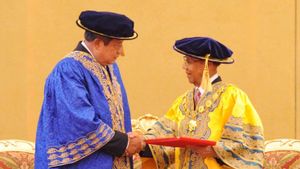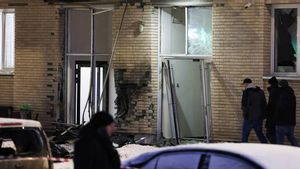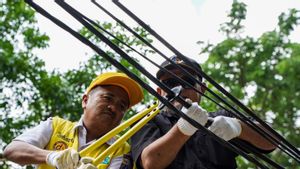JAKARTA - Today, November 12, 24 years ago or in 1996, there was a collision between a Saudi Arabaia Airlines plane and an Air Kazakhstan plane. After being traced the accident was most likely the result of a language barrier and outdated radar equipment.
Quoting SP's Airbuz, Thursday 12 November it all started when Gennady Cherapanov who was the captain of Air Kazakhstan notified air traffic controllers in New Delhi that he was descending from 23,000 to 18,000 feet while approaching India's Gandhi International Airport on the evening of November 12, 1996. Air traffic controller VK Dutta also allowed Cherapanov to descend to an altitude of 15,000 feet. The pilot of the aircraft agreed and followed these directions.
After some time, Navy Captain Shbaly of the Saudi Arabia Airlines Boeing 747, told air traffic controllers that he was at an altitude of 10,000 feet. Dutta then gave him permission to ascend to an altitude of 14,000 feet.
Saudi Arabia Airlines leaves New Delhi three times a week and the Boeing 747 crew is aware of the routine and on time. You could say, at that time the Kazakhstan plane would come to the airport, on the other hand, the Saudi plane left the airport.
The air traffic controller (ATC) notified the Air Kazakhstan pilots that another plane was 14 miles away. ATC assumes the two planes will cross a path that is 1,000 feet away. But they were wrong, and catastrophic things soon followed.
The two planes traveling at more than 300 mph collided with each other. The collision was arguably 700 times stronger than an ordinary car crash.
From Dutta's outdated radar, he saw two dots that signaled the planes had merged and disappeared. However, several eyewitnesses who witnessed immediately saw a very large ball of fire in the sky above the Charkhi Dadri area outside New Delhi.
People in a nearby village saw a large chunk of the plane landing on their field at around 6:40 p.m. local time. Debris rained down on an area six miles wide. As many as three or four people survived the impact of the crash, but then died shortly after the plane hit the ground.
One witness said, "I saw this fireball, like a giant burst of gas burning," followed by a sound bigger than thunder that no one had ever heard. A pilot of the United States Air Force (US) who was flying a cargo plane C-141, saw firsthand the collision.
"We saw from our right hand a large cloud burning with orange light from within the cloud." he said. Then, he reported two fireballs emerging from the clouds hitting the ground less than a minute later.
MisperceptionThe theory that was explained as to the cause of this big accident could occur because the Kazakh flight crew was deemed to lack proficiency in English. They rely entirely on radio operators to communicate with ATC.
Meanwhile the information from the ATC is done in English, while the pilot and co-pilot may be more familiar with Russian.
Since the existing instruments on the Kazakh aircraft are calibrated in the metric system, the internationally recognized foot-based controller instructions must be converted to meters. This conversion process is likely to take more time.
Seconds before the collision, the captain asked the radio operator what altitude they should be at. Not having had time to get a reply from the operator, they were running out of time.
Based on the transcript of communication between the land and the crew, air traffic control is carried out as it should. Ground controllers alerted the pilots that other aircraft were in the area. The two planes were aware that there was another plane on the viewing screen. But the incident was so fast that the collision was inevitable.
The English, Chinese, Japanese, Arabic, and French versions are automatically generated by the AI. So there may still be inaccuracies in translating, please always see Indonesian as our main language. (system supported by DigitalSiber.id)










